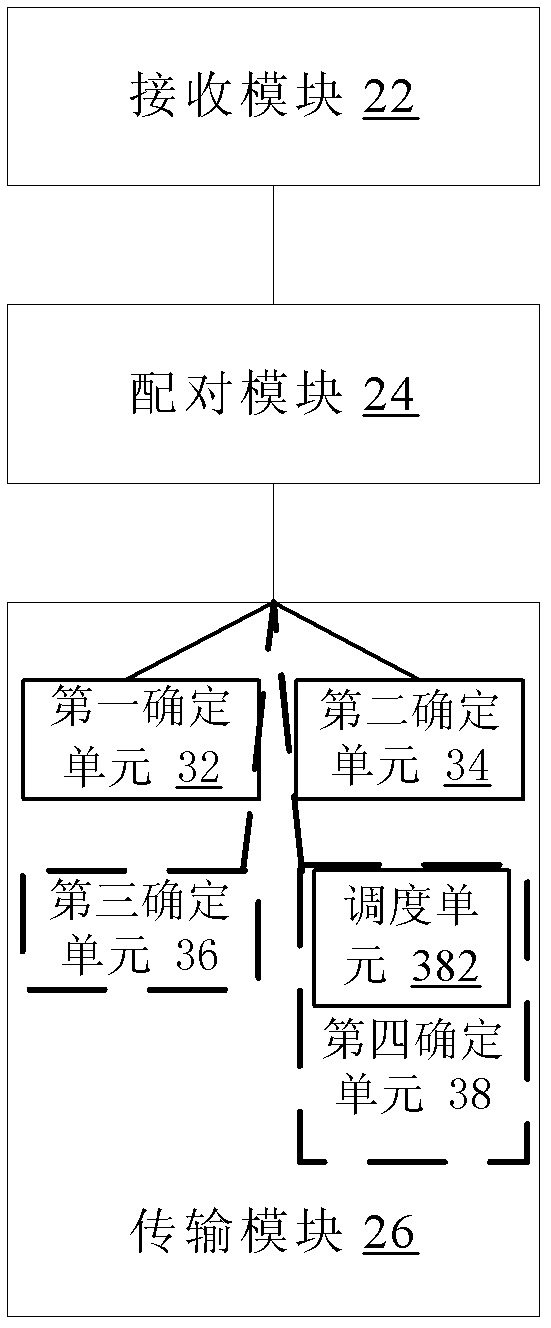Coordinated multi-point data transmission method and device
A data transmission method and cooperative multi-point technology, which are applied in the field of cooperative multi-point data transmission methods and devices, can solve the problems of processing multiple cooperative modes, low efficiency of cooperative multi-point data transmission, etc., and achieve the effect of improving efficiency
- Summary
- Abstract
- Description
- Claims
- Application Information
AI Technical Summary
Problems solved by technology
Method used
Image
Examples
Embodiment 1
[0055] This embodiment relates to the field of wireless communication, and specifically relates to a method and system supporting coordinated multiple point transmission and reception (CoMP for short). Considering the lack of combining multiple cooperative modes in CoMP, a method of coordinated multi-point transmission is proposed, which combines the characteristics of JP and CB cooperation modes. According to the situation of the transmission channel, the cooperative mode is adaptively selected, which makes the system more balanced between interference suppression and scheduling performance, and the system transmission obtains better comprehensive effects and is easy to implement.
[0056] The above method for coordinated multi-point transmission includes: the cell user measures the channels of all the cells in the corresponding measurement set, and feeds back the channel characteristic information of the corresponding serving cell and the interfering cell satisfying the inter...
Embodiment 2
[0067] This embodiment is based on the fact that cell edge users between adjacent cells interfere with each other due to frequency resource overlap. The user at the edge of the cell measures the RSRP of the corresponding cell according to the measurement indicated by the base station, and determines the adjacent cell that has non-negligible interference to the user based on the threshold judgment of the RSRP, and feeds back the channel characteristic information corresponding to the adjacent cell to the above-mentioned user. The base station of the cell, the base station exchanges the channel characteristic information and corresponding user information to the corresponding adjacent cell base station, and determines the mutual interference with the edge users of the cell according to the received channel characteristic information and user information exchanged from the adjacent cell base station user. For edge users whose own cell does not receive interference from neighborin...
Embodiment 3
[0081] This embodiment is based on the fact that cell edge users between adjacent cells interfere with each other due to frequency resource overlap. The user at the edge of the cell measures the RSRP of the corresponding cell according to the measurement indicated by the base station, and determines the adjacent cell that has non-negligible interference to the user based on the threshold judgment of the RSRP, and feeds back the channel characteristic information corresponding to the adjacent cell to the above-mentioned user. The base station of the cell, the base station exchanges the channel characteristic information and corresponding user information to the corresponding adjacent cell base station, and determines the mutual interference with the edge users of the cell according to the received channel characteristic information and user information exchanged from the adjacent cell base station user. For edge users whose own cell does not receive interference from neighborin...
PUM
 Login to View More
Login to View More Abstract
Description
Claims
Application Information
 Login to View More
Login to View More - R&D Engineer
- R&D Manager
- IP Professional
- Industry Leading Data Capabilities
- Powerful AI technology
- Patent DNA Extraction
Browse by: Latest US Patents, China's latest patents, Technical Efficacy Thesaurus, Application Domain, Technology Topic, Popular Technical Reports.
© 2024 PatSnap. All rights reserved.Legal|Privacy policy|Modern Slavery Act Transparency Statement|Sitemap|About US| Contact US: help@patsnap.com










